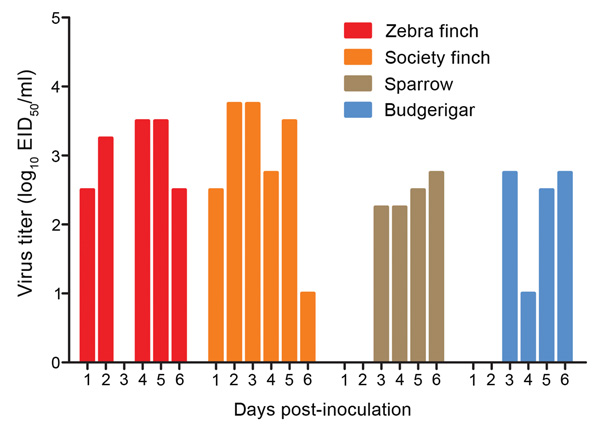Volume 20, Number 3—March 2014
Research
Possible Role of Songbirds and Parakeets in Transmission of Influenza A(H7N9) Virus to Humans
Figure

Figure. Virus shedding into water troughA 500-μL sample of water was collected daily for 6 days, and virus was titrated in chicken eggsThe lower limit of detection was 0.75 50% egg infectious dose/mL.
Page created: February 19, 2014
Page updated: February 19, 2014
Page reviewed: February 19, 2014
The conclusions, findings, and opinions expressed by authors contributing to this journal do not necessarily reflect the official position of the U.S. Department of Health and Human Services, the Public Health Service, the Centers for Disease Control and Prevention, or the authors' affiliated institutions. Use of trade names is for identification only and does not imply endorsement by any of the groups named above.